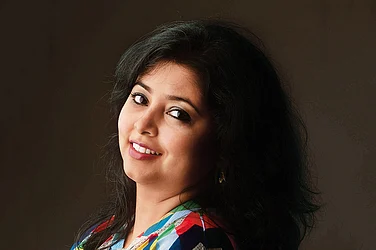History owes an apology to the members of this community and their families, for the delay in providing redressal for the ignominy and ostracism that they have suffered through the centuries,” wrote Indu Malhotra, a then sitting judge, as the Supreme Court decriminalised same-sex relationships in September 2018. Five years later, the fight for inclusion with a demand that equality before law is not a privilege is being fought again before India’s apex court. This time, the fight is for legalising same-sex marriage. Observations trickling in from the country’s top judge are enough to suggest that the Supreme Court wants to be on the right side of history once again.
But such watershed decisions are, as always, fraught with dilemmas. Ostensibly, it will be a seminal move to uphold equality guaranteed by law, but centuries of experience highlight the dangers of ensconcing human relationships in institutional legitimacy, as seeds of patriarchy and conservatism get quickly sown. How about looking away from marital laws to safeguard rights over property, wealth, children, etc.? In parts of Europe, we have seen the success of common-law partnerships.
But beyond the intellectual, there are the more immediate dilemmas of religious and societal norms, as has been amply underscored by the solicitor general and various groups.
At the heart of the same-sex marriage debate is the issue of inclusion, emancipation and empowerment; largely a discourse about a group that has been disadvantaged especially since Victorian sensibilities colonised Indian private and public spaces.
In the boiling cauldron of identities with consciousness and politics swirling around it, the struggle for inclusion is never linear. It is a battle even among the disadvantaged as they jostle for space to grab representation, where modern narratives around affirmative action to uphold diversity often complicate the Asian experience of sociological classifications. It is telling that between celebrating women in March and the pride month in June, Dalit History Month in April was forgotten. The dilemma in this renegotiation is that Indian reservation laws will become problematic when invoked to lessen historical burdens on the disadvantaged. India is yet to find harmony while accommodating higher representation for women along with consideration for caste-based reservation in legislatures; and here we are adding another community demanding a much wider scope of legal inclusion.
India is a country of disadvantaged communities where a million mutinies brew every day. It is a complex overlapping web of class, caste, religion, ethnicities, linguistic groups and diverse hues of sexuality, all competing for limited resources.
As the build-up to the judgement on legalising same-sex marriage rises to a crescendo, are we again legitimising an institution which was hitherto critiqued by progressives for furthering feudalism, where power structures are deeply entrenched and every facet stands on pillars of oppression, one more draconian than the other. As waves of feminism swept the world, attempts have been made to make marriage legally equitable for both genders. But over a century of battles later, has the institution of marriage served the cause of the original disadvantaged: the woman? What hope do we have that a union of two, however alike or apart they may be, will serve the non-binary?
















